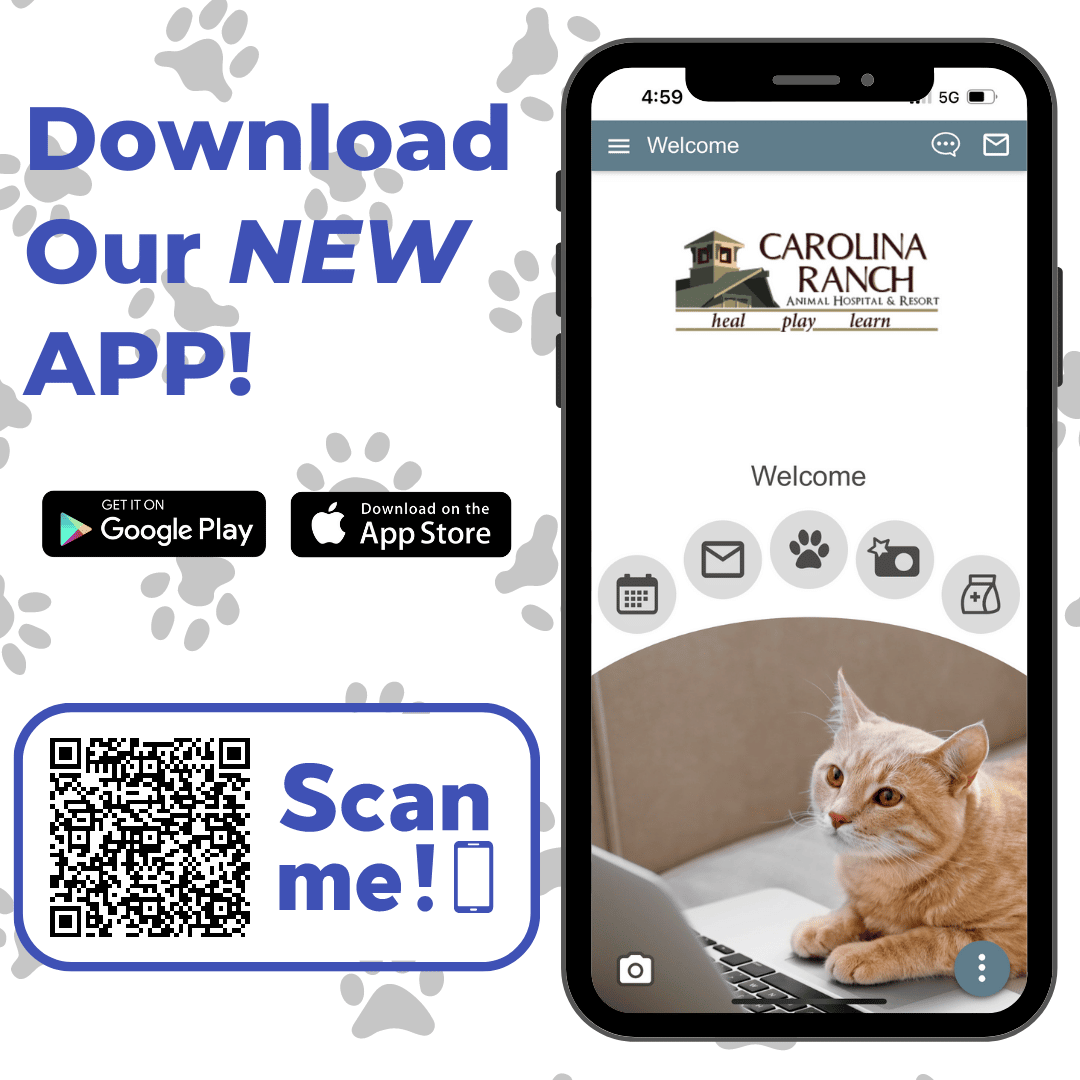Fear Free & Low Stress
What is Fear Free & Low Stress Handling?
In a world where our furry companions play an integral role in our lives, it's essential to prioritize their well-being and ensure that their experiences, particularly in veterinary care, are as stress-free as possible. Fear Free and Low-Stress Handling are revolutionary approaches in the veterinary community designed to transform traditional practices, creating environments that prioritize the emotional and physical comfort of our beloved pets.
Here at Carolina Ranch, we don't want our beloved patients to be afraid of us - either cowering away or growling and trying to bite. We want each of them to have positive experiences during their visits with us. To this aim, we strive not to force the patient to do something they find scary or unpleasant.
Key Points
Good planning is the key to decreasing a pet's anxiety for veterinary visits Follow your pet's specific plan for visits, based on our team's recommendations Cooperative care training is one of the most effective things you can do do decrease a pet's anxiety
Decreasing Anxiety at The Ranch
Our goal for owners and their pets is a calm, low stress visit. There are many things we do to help achieve this:
- having the owner present and often participating in the exam
- providing tasty treats
- keeping our voices and movements calm
- providing special exam room setups such as, nonslip surfaces for your older dog or providing a towel for your cat to hide under
We start with entering the exam room with quiet voices for cats and some dogs, or sometimes happy outgoing greetings for some puppies or adult dogs. Our goal is to know what works for each pet through prior experience with that pet, the information the owner gives us, and reading the pet's body language. You may see your doctor or nurse tempting your cat out of her carrier with treats and love rather than grabbing her and dragging her out. Or they may dismantle the carrier and take the lid off instead of pulling her through the door. If your doctor or nurse spends the first couple of minutes ignoring your dog when they walk in, it's because they sense that he is nervous and needs a little time to adjust to their presence instead of immediately making him the center of attention. Your doctor or nurse may slather a "lick mat" with cheese or peanut butter to help distract him while they give vaccines or draw a little blood.
We take a team approach to decreasing the stress of veterinary visits involving not only the veterinarian and the nursing staff, but also the owner. We involve owners in exams by having them present and often helping. Some owners will help hold or pat and talk to their dog during the exam. Sometimes we'll have owners give treats. Some owners have done extensive cooperative care training at home and those owners have an even more active role in the exam.
If Fluffy or Fido are still very anxious for their appointment, your doctor may decline doing some of the services that day (such as nail trims or blood draws). They may recommend rescheduling the appointment and advising giving pre-visit anti-anxiety medications (such as Trazodone or Gabapentin) to provide mild to moderate sedation. In some cases, they may ask you to give the medication the night before and the morning of the appointment. This is called the "Chill Protocol". It helps reduce your pet's anxiety for the visit and will hopefully allow us to do our exam, blood draw, give vaccines, trim nails, etc. without completely stressing your pet and needed to use force. The Chill Protocol isn't always just for the animals that might bite or scratch, we also use it for dogs or cats who are really worried about the visit (trying to escape, panting, shivering, etc.). Even animals that freeze during an exam are often freezing because they're very worried. We have many years of exams ahead of us for our patients and we want each visit to be easier than the last.
Decreasing Anxiety at Home
Ideally, creating a positive veterinary experience starts before you leave home. The most useful approach to helping our pets during veterinary visits is cooperative care training. As the name implies, this is teaching the pet to be a part of the process. Think about the lion that allows blood to be drawn from his tail or the hippopotamus that opens her mouth for an exam - this is cooperative care. Here are some other ways to help decrease veterinary anxiety at home:
For cats and kittens:
- Bring your cat's crate out several days before her appointment to let her get used to it. Otherwise as soon as she sees it, she is going to bolt under the bed.
- Throw some treats in the crate and put a comfy blanket in there. You may be surprised to find her sleeping in it!
- One the day of her appointment throw some more treats and gently put her in for a trip to the office.
- Secure the crate in the car, either by seat-belting it in place or by placing it on the floor. Then if there is sudden stop in traffic she doesn't go flying.
For dogs and puppies:
- Skip breakfast the morning of the appointment and pack a little bag of your pup's favorite treats for his visit.
- Remember to bring in a stool sample and spare him the discomfort of his nurse trying to get one rectally.
- If he gets car sick, talk to your doctor about a medication to give that morning to help with his nausea.
- Secure him in the car either in a crate or in a safety harness.




